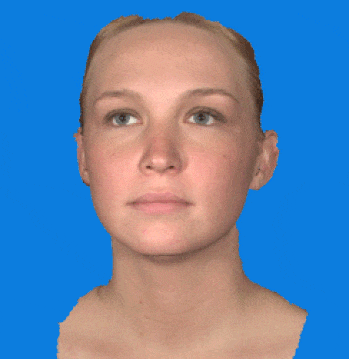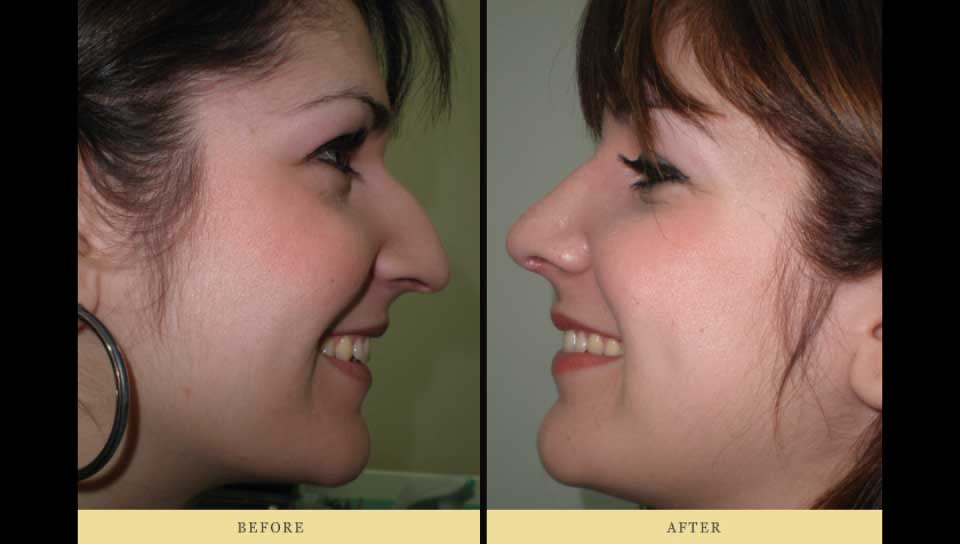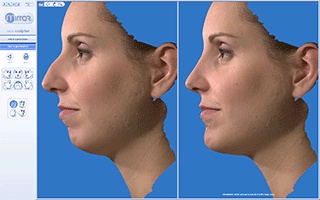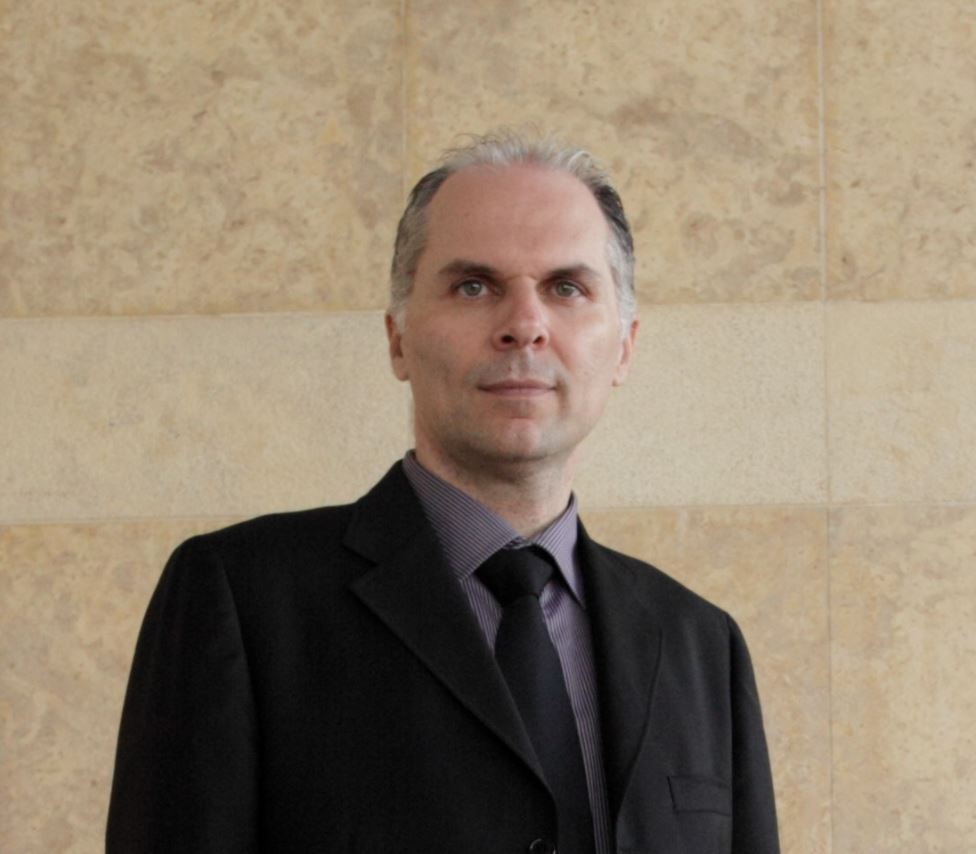International Congresses
Global and Paneuropean Congresses
IMMUNOHISTOCHEMICAL DETECTION OF E-CADHERIN IN CERTAIN TYPES OF SALIVARY GLAND TUMOURS
The Journal of Laryngology & Otology (2006), 120, 298–304.
1Andreadis DS, DDS, PHD, 1Epivatianos ADDS, PHD, 2Mireas G, MD, 3Nomikos A, MD,
1Poulopoulos A, DDS, MSC, PHD, 4 Yiotakis J, MD, 3Barbatis C, MD, FRCPATH
1Department of Oral Medicine and Maxillofacial Pathology, Dental School, Aristotle University of Thessaloniki,Thessaloniki, the Departments of 2ENT Surgery and 3Histopathology, Red Cross Hospital of Athens, Athens, and the 4Department of Otolaryngology, Hippocration Hospital, Athens Medical School, Athens, Greece.
Abstract
Objectives: To investigate the topography of E-cadherin and its possible correlation with the histological phenotype of salivary gland tumours.
Material and methods: Archival formalin-fixed, paraffin-embedded sections of 54 benign and 56 malignant tumours and 24 samples of normal and inflamed salivary gland tissue were studied immunohistochemically using an Envision/horseraddish peroxidase (HRP) technique
Results: In normal and inflamed salivary gland samples, E-cadherin was expressed at the membrane of acinar, myoepithelial and ductal cells located at cell–cell contact points. Reduction and/or absence of E-cadherin was only observed in pleomorphic adenoma at the peripheral cells of the duct-like or island structures, or in the cells exhibiting plasmacytoid or stromal differentiation. Neoplastic epithelium in Warthin’s tumours and in myoepithelial and oncocytic adenomas was strongly positive. Furthermore, a weak to moderate loss of expression which was related to tissue tumour subtype was seen in malignant tumours such as: adenoid cystic carcinomas; polymorphous low-grade adenocarcinomas; acinic cell carcinomas; and mucoepidermoid low-grade, epithelial-myoepithelial, lymphoepithelial and squamous low-grade carcinomas. Moderate to extreme loss or alternative cytoplasmic non-functional expression were observed in cases of salivary ductal carcinoma, carcinosarcoma, myoepithelial carcinoma, oncocytic adenocarcinoma, unspecified adenocarcinoma and squamous high-grade carcinomas.
Conclusion: This study suggests a direct association of E-cadherin expression with neoplastic histologic phenotype, which is lost in the more undifferentiated and invasive epithelial salivary gland tumours.
ONCOGENE EXPRESSION IN HEAD AND NECK PARAGANGLIOMAS
MIREAS Georgios, MAVROIDAKOS Stavros, VLACHOU Stamatia, BARBATIS Calypso*, TSIKOY -PAPAFRAGOU Ekaterini*, PAPAZOGLOU Georgios
ENT Department, Red Cross Hospital Korgialenio-Benakio, Athens, Greece
*Department of Pathology, Red Cross Hospital Korgialenio-Benakio, Athens, Greece
Head and Neck Paragangliomas (PGL’S) are rare but true neuroendocrine neoplasia that may develop at many different sites with the commonest being the carotid body (CB-PGL’s) and the middle ear (ME-PGL’s).
A retrospective clinicopathological study was performed on 13 PGL’S of the Head and Neck, diagnosed and operated during the last 12 years in our Department: glomus tympanicum (7), carotid body tumors (4) and glomus jugulare (2). The patients were 4 males and 9 females, with a mean age of 52 years (range 37-69 years), followed up for a period of 1-12 years (Mean: 6 years). An immunohistochemical study was performed using the Envision/HRP method for the study of oncoprotein c-myc, the product of the antiapoptotic gene bcl-2 and the antigen of cell proliferation Ki-67.
There was diffuse cytoplasmic staining for all but two neoplasms for the c-myc protein. Bcl-2 expression was observed only focally and weakly in 5/13 cases, with a tendency for positivity for spindle cell type. Only in one large CB PGL (size 3 cm) showed 3% Ki67. All other cases were negative.
C-myc overexpression characterizes Head and Neck PGL’s. The low expression of bcl-2 and the almost undetectable proliferative rate may be relevant with the benign behavior of the tumors, as none had recurred.
- Da-Gong Wang, Aaros A.B. Barros D’ Sa, C. F. Johnston, K. D. Buchanan. Oncogene expression in carotid body tumors. Cancer, 1996, 77 (12): 2581-2586
- Pedro Filho, A. Rappaport, V.A.F. Alves, O.V.P. Denardin, J.A. Sobrinho, M.B. de Carvalho. Paragangliomas of the head and neck: clinical, morphological and immunohistochemical aspects. Sao Paolo Medical Journal, 2001,119 (3)
5th European Congress of OtoRhinoLaryngology Head and Neck Surgery,September 11-16 2004, Rodos HellasGreece
CAROTID BODY AND MIDDLE EAR PARAGANGLIOMAS. CLINICAL ASSESSMENT AND SURGICAL TREATMENT.
MAVROIDAKOS Stavros, MIREAS Georgios, VLACHOU Stamatia, LOUVERDIS Dionisios, TRIANTOS Stelios, PAPAZOGLOU Georgios
ENT Department, Red Cross Hospital Korgialenio-Benakio, Athens, Greece
Head and neck paragangliomas (PGL) are rare neuroendocrine tumors. They originate from various paraganglia, members of a complex of endocrine cells, the carotid body and the middle ear being the most common locations in the head and neck.
The clinical and pathologic features of 17 carotid body tumors and 20 middle ear tumors (15 glomus tympanicum and 5 glomus of the jugular bulb) diagnosed and operated in our Department were reviewed, as well as their surgical treatment. The patients were 15 males and 22 females, aged 37 to 69 years (mean: 54 yrs). Eighteen tumors presented on the left side and 19 on the right. Patients were followed up for 1-25 years (mean: 11 yrs). The initial symptoms and their duration, the extension of the tumor, the diagnostic evaluation undertaken along with the operative technique are presented and discussed.
The majority of glomus tympanicum (13/15) were operated through a transcanal approach and were submitted to a Farrior hypotympanotomy, and 2 were submitted to a radical mastoidectomy through a postauricular transmastoid approach. The glomus jugulare were operated through a combined mastoid-neck approach.
The carotid body tumors were approached through a lateral cervical incision at the carotid artery bifurcation level. In 7 cases we proceeded to ligation of the external carotid artery, in 3 patients to ligation of the internal carotid artery and by pass. One patient suffered a transient paresis of the XII nerve, while 1 patient developed hoarseness due to manipulation of the X nerve, which was satisfactorily recompenseted.
The surgical excision is the treatment of choice for head and neck PGL, with very good results. The only relative contraindication is the general condition of the patient may cause the application of an alternative treatment.
- Wang SJ, Wang MB, Barauskas TM, Calcaterra TC. Surgical management of carotid body Otolaryngol Head Neck Surg. 2000 Sep; 123(3):202-6tumors
- Plukker JT, Brongers EP, Vermey A, Krikke A, van den Dungen JJ. Outcome of surgical treatment for carotid body paraganglioma Br J Surg. 2001 Oct; 88(10):1382-6.
- Weber PC, Patel S. Jugulotympanic paragangliomas. Otolaryngol Clin North Am. 2001,34(6): 1231-40
5th European Congress of OtoRhinoLaryngology Head and Neck Surgery,September 11-16 2004, Rodos HellasGreece
EXTENSIVE PLUNGING RANULA: A CASE REPORT
Authors: SIMEONIDIS S. George, GRIGORIADIS Kyriakos, PAPASTERGIOU Stavroula, MOIREAS George, DEMEROUTIS John.
Affiliation: 251 HELLENIC AIR FORCE HOSPITAL & V.A.
HEAD & NECK SURGERY DEPARTMENT.
Introduction: A plunging ranula is a mucous extravasation cyst of the sublingual gland, appearing as a swelling in the submental and submandibular regions.
Material & Method: We present a case of an extensive plunging ranula (sized 8X6 cm), involving multiple tissue spaces in a young woman 23 years old. The true extent of this lesion and its relationship to the surrounding anatomy, was well illustrated by CT scan. There was no intraoral appearance of the lesion.
Results: Ranula was managed surgically.
Conclusions: Plunging ranula is a very rare cystic lesion of the neck and must always be included in our differential diagnosis.
References: 1. Charnoff SK, Cart Barbara. Plunging Ranula: CT Diagnosis. Radiology 1986; 158:467-468.
- Coit WE, Ric Harnsberger H, Osborn G. Anne, Smoker RK Wendy, Stevens MH, Lufkin RB. Ranulas and Their Mimics: CT Evaluation. Radiology 1987; 163:211-216.
- De Vissher JGAM, Van Der Wal KGH, De Vogel PL. The Plunging Ranula. J Cranio-Max-Fac. Surg. 17(1989) 182-185.
- Karim Ali M, Chiancone G, Knox GW. Squamous Cell Carcinoma Arising in a Plunging Ranula. J Oral Maxillofac Surg 48:305-308, 1990.
- Lanlois NEI, BChir MB, Kolhe P. Plunging Ranula: A Case Report and a Literature Review. Hum Pathol 23:1306-1308.
- McClatchey KD, Appelblatt H Nancy, Zarbo RJ, Merrel DM. Plunging Ranula. Oral Surg. 57:408-412, 1984.
- Parekh D, Stewart M, Joseph C, Lawson HH. Plunging ranula: a report of three cases and reviw of the literature. Br J Surg 1987, Vol. 74, April, 307-309.
- Shelley MJ, Yeung KH, Bowley NB, Sneddon KJ. A rare case of an extensive plunging ranula: Discussion of imaging, diagnosis, and management. Oral Surg Oral Med Oral Pathol Oral Radiol Endod 2002;93:743-6.
- Skouteris CA, Sotereanos GC. Plunging Ranula: Report of a Case. J Oral Maxillofac Surg 45:1068-1072, 1987.
- Takimoto T. Radiographic Technique for Preoperative Diagnosis of Plunging Ranula. J Oral Maxillofac Surg 49:659, 1991.
- Yoshimura Y, Obara S, Kondoh T, Naitoh SI. A Comparison of Three Methods Used for Treatment of Ranula. J Oral Maxillofac Surg 53:280-282, 1995.
5th European Congress of OtoRhinoLaryngology Head and Neck Surgery,September 11-16 2004, Rodos HellasGreece
IMMUNOHISTOCHEMICAL DETECTION OF DESMOSOMAL CELL ADHESION MOLECULE DESMOGLEIN-2 (DSG-2) IN SALIVARY GLAND NEOPLASMS.
AUTHORS: 1 Andreadis DΑ, 1 Epivatianos Α, 3Nomikos Α, .2Mireas G, 1Poulopoulos Α, 2Vlahou S,1Antοniades, D, 2Papazoglou G, 2Christidis C, 3Barbatis C. .
AFFILIATION: 1Department of OraI Medicine and Maxillofacial Pathology, School of Dentistry, Aristotle University of Thessaloniki,2Department of Otorhinolaryngology and 3Department of Histopathology, Red Cross Hospital of Athens, Greece
IDEA: A comparative immunohistochemical study of the desmosomal cadherin Desmoglein-2 (Dsg-2) in normal, benign and malignant salivary glands.
METHOD: A total of 134 cases (24 normal, 54 benign, 36 malignant) were studied with the Envision – HRP immunohistochemical technique.
RESULTS: Dsg-2 is expressed along the basolateral surfaces of the epithelial cells of the normal acini and the entire ductal system with increased tensity at the basal aspect of the ductal epithelial cells. Warthin’s tumour and intercellular Dsg-2 expression but cytoplasmic localisation was diffuse in salivary ducts carcinomas, focal in acinic cell and adenoid cystic carcinomas and reduced in epithelial-myoepithelial, low grade polymorphous and basal cell adenocarcinomas with retention of the membranous distribution. Oncocytic, lymphoepithelial, mucoepidermoid and non-otherwise specified adenocarcinomas formed absent or limited cytoplasmic expression.
CONCLUSION: This is one of the very few studies on Dsg-2 expression in salivary glands and indicates quantitative and qualitative change in benign and malignant neoplasia and histological types. Further investigation is needed for assessing its clinical relevense.
18th Congress of International Federation of Otorhinolaryngological Societies, 25-30 June 2005, Rome, Italy
DUPLICATION OF THE THYROID GLAND
AUTHORS: Lefantzis D, Louverdis D,Dritsas G, Mireas G, Vlachou S, Plessas G, Papazoglou G
AFFILIATION: ORL department of the Red Cross Hospital of Athens.
IDEA: We present a case of ectopy and duplication of the thyroid gland
METHOD: The patient was a 40 years old man who was operated for multinodal goiter. The ectopy and duplication of the thyroid gland was a surgical finding during the routine thyroidectomy. More specifically there was a second thyroid gland with normal morphology but less than the half size, who was packed in between the infrahyoid muscles, immediately in front of the original thyroid
RESULTS: The operation completed when both the normal thyroid gland and the ectopic one were excised. No post-operated complications appeared.
CONCLUSION: Although duplication of thyroid gland is a rare finding all head and neck surgeons must be awared of it.
18th Congress of International Federation of Otorhinolaryngological Societies, 25-30 June 2005, Rome, Italy
EPITHELIAL – MYOEPITHELIAL CARCINOMA OF THE PAROTID GLAND
AUTHORS: 1Mireas G , 1 Louverdis D, 1 Christidis C, 2 Nomicos A. . 2Barbatis C 1Papazoglou G
AFFILIATION: 1Department of Otorhinolaryngology – Head and Neck Surgery and 2Department of Histopathology, Red Cross Hospital of Athens, Greece
IDEA: Two rare cases of epithelial–myoepithelial carcinomas of the parotid gland are presented
METHOD: The patients were females aged 44 and 49 yo, presented with a slowly growing mass of their left parotid gland, of 12 and 6 months duration respectively. The second patient also complained for slight pain in the parotid area. Preoperative CTs showed parotid masses.The patients were operated on and had an excision of the superficial lobe the first patient and of the deep lobe the second one. No patient underwent neck dissection.
RESULTS:Both operations had very good results with preservation of the facial nerve trunk and its main branches. The histological examination results were the following:
case 1: epithelial – myoepithelial carcinoma of 2 cm (max diam) with Ki67 ~5% and nuclear possitivity for p53<5%. Immunohistochemical study revealed: SMA (+), Bcl-2 (+), GFAP (+), EMA (+) and Mcyt (+).
case 2: epithelial – myoepithelial carcinoma of 1.8 cm (max diam) with Ki67 <2% and nuclear possitivity for p53~30%. Immunohistochemical study revealed: SMA (+), Bcl-2 (++), GFAP (++), S100(+).
The patients were not referred for radiotherapy or chemotherapy. A 4 years-follow up show no evidence of recurrency or distal metastasis.
CONCLUSION: Epithelial – myoepithelial carcinomas of the parotid gland are rare tumors with significant likelihood of recurrence 60% (3 years mean) and reveals metastatic disease in 9%. The surgical excision is the treatment of choise for this neoplasm and the follow up must continue for a period of two decades after operation.
18th Congress of International Federation of Otorhinolaryngological Societies, 25-30 June 2005, Rome, Italy
MALIGNANT ONCOCYTIC CARCINOMA OF THE PAROTID GLAND
AUTHORS: 1Vlachou S, 1Mireas G , 1 Triantos S, 1 Mavroidakos S, 2Barbatis C. . 1Papazoglou G
AFFILIATION:1Department of Otorhinolaryngology – Head and Neck Surgery and 2Department of Histopathology, Red Cross Hospital of Athens, Greece
IDEA: A rare case of a malignant oncocytic tumor of the parotid gland is reported
METHOD: The patient was a 82-years-old man, who presented with a rapidly growing and painful mass of the right parotid gland, of 5 months duration. The patient was operated on and had a right total parotidectomy with preservation of the facial nerve.
RESULTS: The histological examination revealed a malignant oncocytic tumor. The tumor recurred 2 months after the primary operation. The patient was referred for radiotherapy and chemotherapy but he unfortunately passed away 5 months later.
CONCLUSIONS: Tumors emerging from oncocytes are not frequent and the malignant variant is extremely rare, according to the literature. The purpose of this presentation is to contribute to the limited information regarding this rare entity.
18th Congress of International Federation of Otorhinolaryngological Societies, 25-30 June 2005, Rome, Italy
SARCOIDOSIS – ENT CLINICAL MANIFESTATIONS
AUTHORS 1SYMEONIDIS G 1MIREAS G, 1PAPADOPOULOS D, 1KAPRALOS V, 2VLACHOU S, 2 MAVROIDAKOS S, 1DEMEROUTIS I
AFFILIATION 1 251 HELLENIC AIR FORCES GENERAL HOSPITAL & V.A. ENT CLINIC 2 Department of Otorhinolaryngology – Head and Neck Surgery – Red Cross Hospital. Athens Greece.
IDEA Sarcoidosis is a chronic, multisystem granulomatous inflammatory disease of unknown etiology. Since its description in 1899 by Boeck, a remarkable number of potential causes have been implicated. The potential clinical manifestations of Sarcoidosis are numerous, mostly from the lower respiratory tract. We tried to find out how many ENT clinical manifestations exist due to Sarcoidosis.
METHOD We examined patients with known Sarcoidosis in whom their disease diagnosis had been confirmed by histologic examination. We performed a full ENT clinical examination, Opthalmology, Neurology and Laboratory tests.
RESULTS We examined 52 patients, from 1996 till 2004. A male preponderance of 29:23 was found. The average age of onset for women was higher than men (49yo vs 29yo). In 24 of the above patients, signs and symptoms of Head and Neck exothoracic Sarcoidosis occurred.
CONCLUSION ENT examination can be proved a useful tool for the diagnosis of Sarcoidosis, because ENT clinical manifestations are not so rare as it has been described till now.
18th Congress of International Federation of Otorhinolaryngological Societies, 25-30 June 2005, Rome, Italy
YELLOW NAILS SYNDROME-YNS AND SINUSITITS.
AUTHORS: Lefantzis D, Mireas G, Bshara B, Christidis C, Dritsas G, Mavroidakos S, Papazoglou G
AFFILIATION: ORL department of the Red Cross Hospital of Athens.
IDEA: A rare case of a patient with Yellow Nails Syndrome and sinusitis along with review of the literature is reported.
METHOD: The patient was a 40 years old woman who presented complaining for a persisting form of chronic sinusitis.
A full examination confirmed that she was suffered from the Yellow Nails Syndrome and its typical symptomatology.
The YNS is characterized by the triad of symptoms: scleronychia (yellow nails), peripheral lymphostasis and pleural effusion.
This rare syndrome is coupled with increased possibility of paranasal sinusitis (83%).
RESULTS: The treatment included corticosteroids and antibiotics with satisfied results.
CONCLUSION: An otolaryngologist is often the first medical doctor faced with the diagnosis and treatment of this syndrome,so he has to know about its features and treatment
18th Congress of International Federation of Otorhinolaryngological Societies, 25-30 June 2005, Rome, Italy
IMMUNOHISTOCHEMICAL DETECTION OF DESMOSOMAL CELL ADHESION MOLECULE DESMOGLEIN-2 (DSG-2) IN SALIVARY GLAND NEOPLASMS.
AUTHORS:1 Andreadis DΑ, 1 Epivatianos Α, 3Nomikos Α, 2Mireas G, 1Poulopoulos Α, 2Vlahou S,1Antοniades, D, 2Papazoglou G, 2Christidis C, 3Barbatis C. .
AFFILIATION: 1Department of OraI Medicine and Maxillofacial Pathology, School of Dentistry, Aristotle University of Thessaloniki,
2Department of Otorhinolaryngology and 3Department of Histopathology, Red Cross Hospital of Athens, Greece
IDEA:A comparative immunohistochemical study of the desmosomal cadherin Desmoglein-2 (Dsg-2) in normal, benign and malignant salivary glands.
METHOD:A total of 134 cases (24 normal, 54 benign, 36 malignant) were studied with the Envision – HRP immunohistochemical technique.
RESULTS:Dsg-2 is expressed along the basolateral surfaces of the epithelial cells of the normal acini and the entire ductal system with increased tensity at the basal aspect of the ductal epithelial cells. Warthin’s tumour and intercellular Dsg-2 expression but cytoplasmic localisation was diffuse in salivary ducts carcinomas, focal in acinic cell and adenoid cystic carcinomas and reduced in epithelial-myoepithelial, low grade polymorphous and basal cell adenocarcinomas with retention of the membranous distribution. Oncocytic, lymphoepithelial, mucoepidermoid and non-otherwise specified adenocarcinomas formed absent or limited cytoplasmic expression.
CONCLUSION: This is one of the very few studies on Dsg-2 expression in salivary glands and indicates quantitative and qualitative change in benign and malignant neoplasia and histological types. Further investigation is needed for assessing its clinical relevense.
18th Congress of International Federation of Otorhinolaryngological Societies, 25-30 June 2005, Rome, Italy
Rate this article
Share the page





